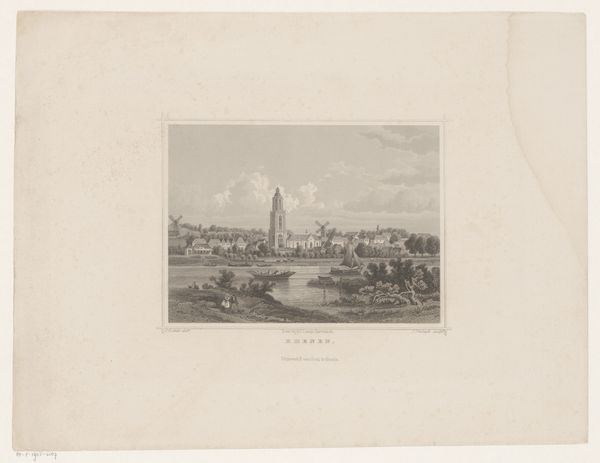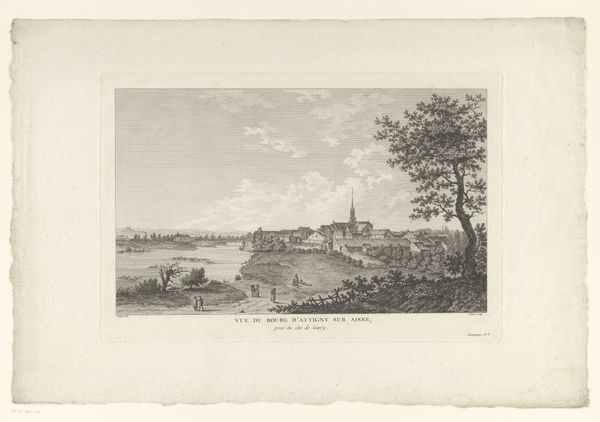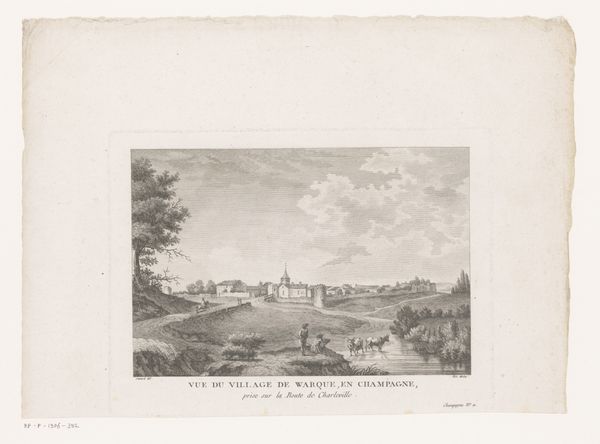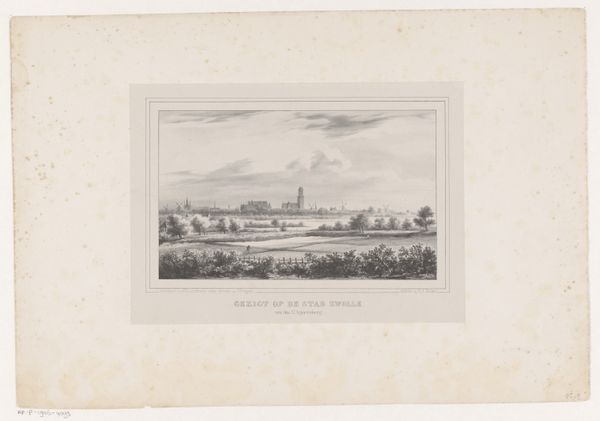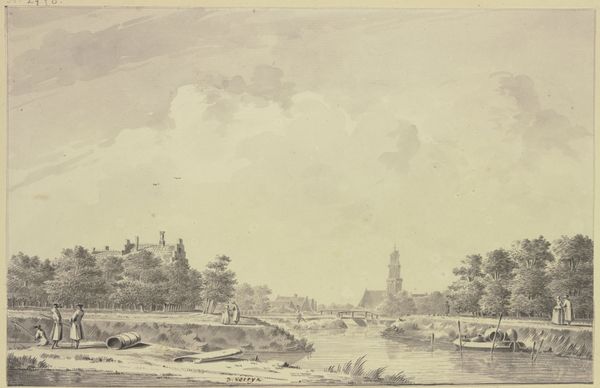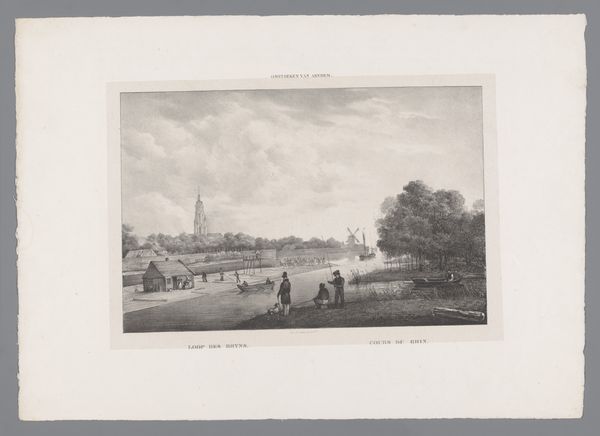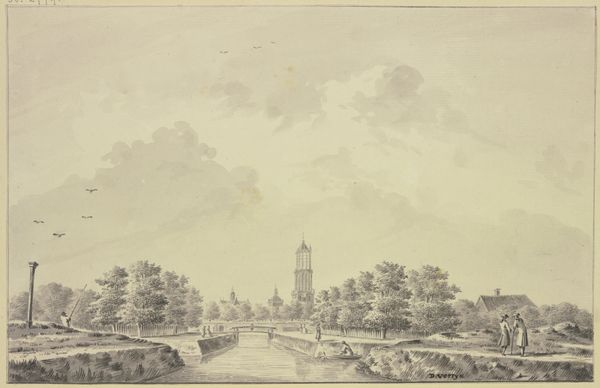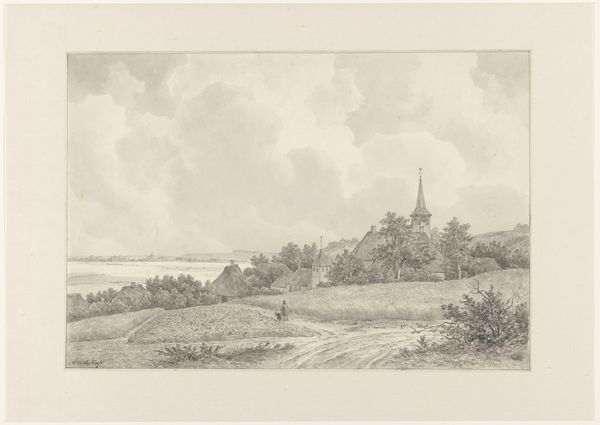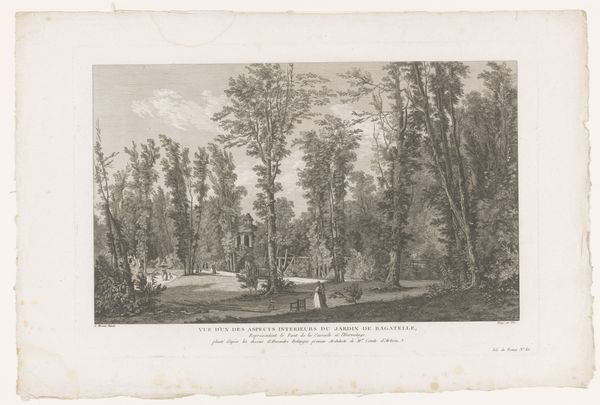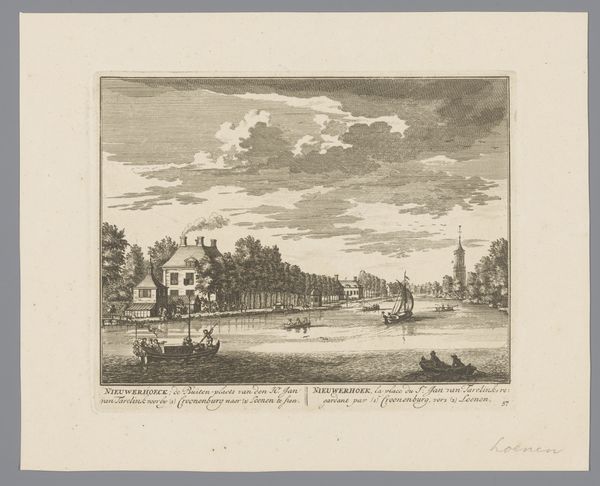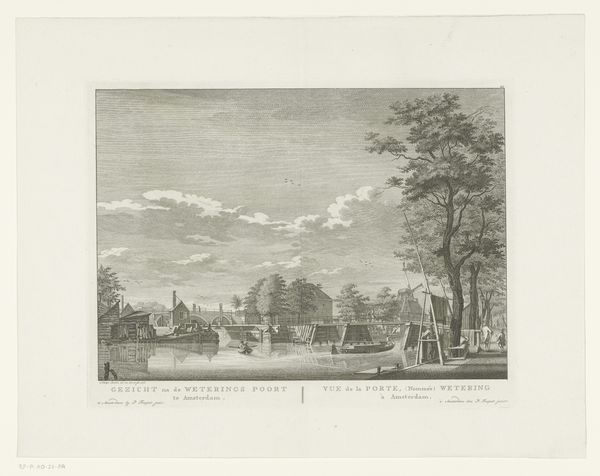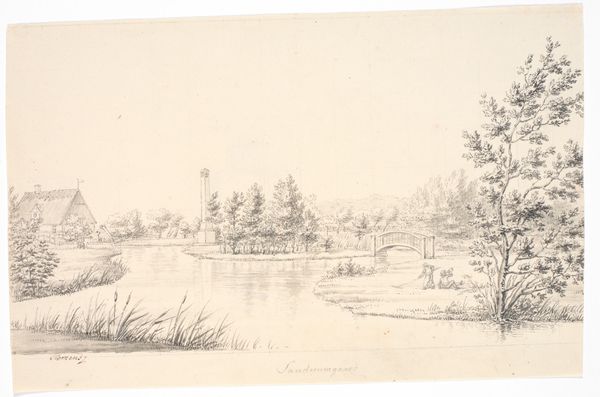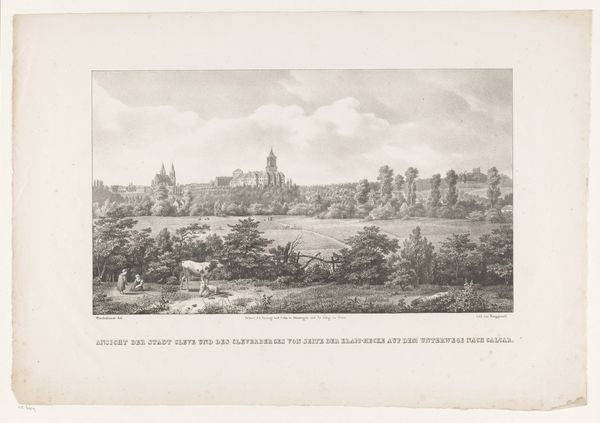
drawing, paper, watercolor
#
drawing
#
neoclacissism
#
landscape
#
paper
#
watercolor
#
romanticism
Dimensions: height 326 mm, width 407 mm
Copyright: Rijks Museum: Open Domain
Editor: This watercolor and ink drawing, "Korenveld met de Naald te Soestdijk" by Cornelis Steffelaar from 1837, is remarkably subdued in its palette. The stacks of wheat create this lovely foreground rhythm leading towards the distant obelisk, what strikes you most about it? Curator: The monument indeed anchors the scene. Beyond the aesthetic, I see a landscape imbued with complex symbolism reflective of its time. This was the era of Dutch Restoration after the Napoleonic period; Steffelaar, in depicting this landscape so meticulously, may be pointing toward themes of national identity, historical memory, and perhaps even socio-political reconciliation after a turbulent era. Consider the deliberate placement of the "needle" amidst the wheat – a symbol of prosperity but also resilience. What could it be paying homage to, do you think? Editor: Perhaps it represents a kind of collective aspiration for stability and agricultural prosperity? Given the landscape focus and its Neoclassical leanings, should we read anything in the absence of people or peasants from this supposedly prosperous view? Curator: Exactly! This absence is significant. Ask yourself, whose narrative is being told? Is this landscape presented for the enjoyment of the landowners, thereby highlighting the economic disparity prevalent during that era? Remember, Romanticism, which also touched this work, had its blind spots regarding social justice. The idyllic presentation may mask deeper structural inequalities. Editor: So, while on the surface it seems to represent peace and prosperity, the image, on closer inspection, might critique power structures? Curator: Precisely. By understanding the social and political currents of the time, we can see how Steffelaar’s image not only depicts a landscape but also subtly participates in the discourses surrounding nationhood, class, and historical memory. Editor: That’s really fascinating; I wouldn’t have picked up on those layers without that context. It makes you question whose story is left out. Curator: Indeed. And it's in that questioning that the art truly begins to speak to us today.
Comments
No comments
Be the first to comment and join the conversation on the ultimate creative platform.
